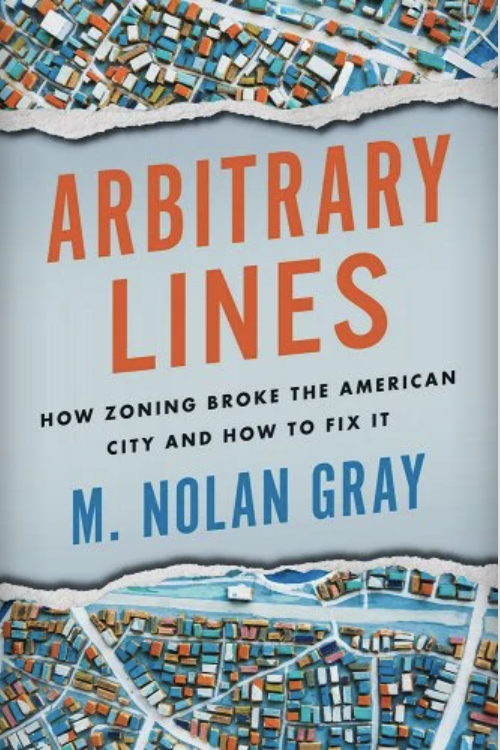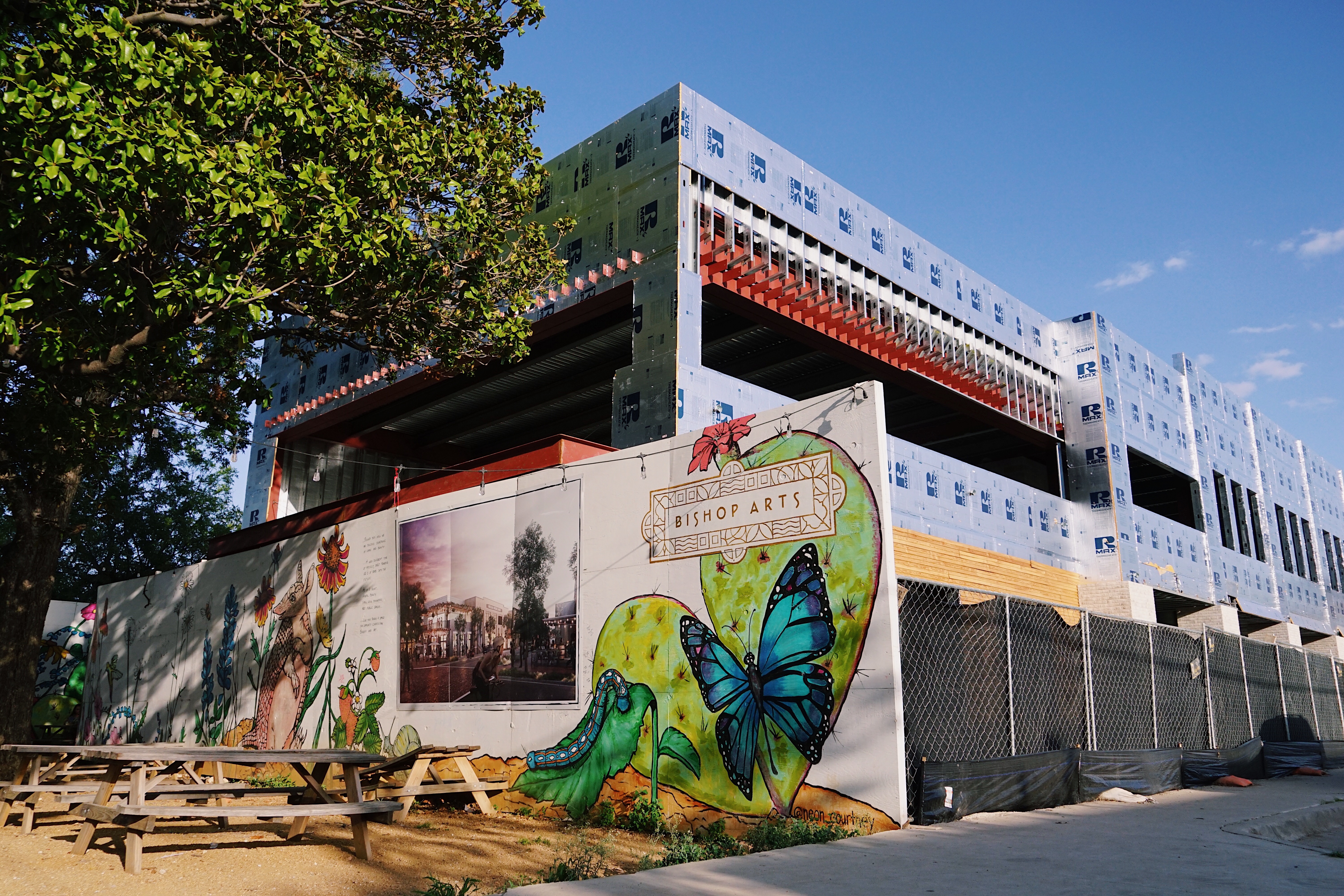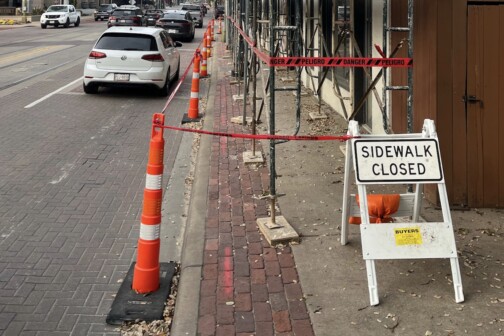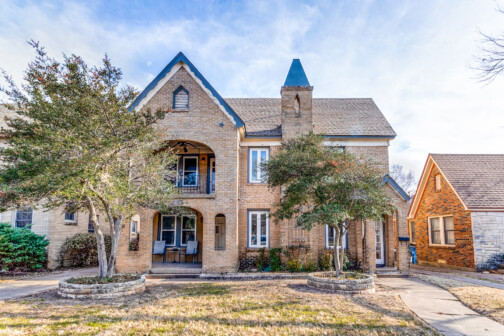The city of Dallas is currently rewriting its land use plan, which, in its simplest terms, governs what can be built and where.
A few months ago, I began looking at what had changed since 2006, when the city first adopted what it called ForwardDallas. How were other cities similar in size to Dallas handling development? How were they addressing historic inequities in their land use policies and zoning, like where industry is allowed to operate and which neighborhoods can densify?
I came across a piece in The Atlantic with a curious title: “Cancel Zoning.”
The author, M. Nolan Gray, makes the argument that zoning exacerbates inequality, housing affordability issues, sprawl, and segregation. In some cities, almost 90 percent of its housing is zoned single-family. Zoning in Dallas is a curious patchwork. According to an analysis by the nonprofit Child Poverty Action Lab, about 48 percent of the city is zoned for single-family homes with detached garages.
Another 17 percent—about 65 square miles—are made up of what’s known as planned development districts. That’s when a developer wants to do something that the code doesn’t allow, so they request a zoning change that carves out a certain area from its surroundings. That could mean using fewer parking spots outside a retail store, adding a patio to a restaurant, or modifying height requirements to try and build something higher than what is allowed by-right.
Gray would like American urban planners to look to Houston, a city that has largely eschewed zoning in favor of addressing specific behaviors and nuisances. It allows neighborhoods to sort of opt-in to zoning through deed restrictions.
“Houston builds housing at 14 times the rate of peers like San Jose. And it isn’t just sprawl: In 2019, Houston built roughly the same number of apartments as Los Angeles, despite being half its size,” Gray writes. “Since reforms to minimum-lot-size rules were put in place in 1998, more than 25,000 townhouses have been built, overwhelmingly in existing urban areas.”
Land is increasingly expensive, and it’s putting home ownership (and even renting) out of reach for a lot of people. Density allows builders to take the same plot of land and build up, creating more places for people to live.
Pushes to get rid of zoning aren’t just happening on the local level. In 2019, four federal bills were authored that would have tied federal funding for other projects to zoning reform.
But I was even more curious about Gray’s thoughts after reading his book, Arbitrary Lines: How Zoning Broke the American City and How to Fix It. I spoke with him last month at length about everything from zoning and environmental concerns like Shingle Mountain, to what zoning was originally used for.
Part of our conversation follows. It has been edited for length and clarity.
I guess my first question is this: What do you say to people who have lived with zoning their entire life, and are convinced that absolute mayhem will happen without zoning, like you’ll suddenly see a double-wide trailer next to a McMansion?
Gray: I think this is often a reason given for zoning—that we need zoning to separate truly incompatible uses, like a single-family home and a pile of shingles, right? Of course, plenty of times zoning allows stuff like that to happen. As it happened in the case of (Shingle Mountain), I’ve lived in New Jersey and Los Angeles and you see this kind of stuff all the time.
I would suggest that zoning actually isn’t as effective at separating incompatible uses as people like to think. I think zoning actually is really effective at segregating cities based on socioeconomic status.
In your example, zoning is very robust at making sure that a double-wide trailer home would not be built next to a mansion. I would suggest a few things: to a certain extent, land markets solve a lot of these conflicts—most of the conflicts. We kind of see this in Houston and you see this in other un-zoned contexts; different types of land uses, for the overwhelming majority of cases, have dramatically different locational preferences. We don’t end up often with industry next to residential, and that’s even before regulations come into the picture.

Where it becomes complicated is with these edge cases, these exceptions where this thing did happen. How do you deal with that? I actually think there are ways to deal with it that don’t involve a full-scale zoning ordinance.
So you can say, for example, ‘Hey, there are going to be certain areas of town where we just don’t allow light or heavy industry.’ Cities adopted rules like that and had rules like that before zoning.
Even in Houston, for example, they have many rules for particularly offensive uses. You can’t have a slaughterhouse within so many feet of a single-family home or any type of residential. Or you can’t have a sexually-oriented business within so many feet of a school or residence.
You can have targeted rules that deal with things like that in a way that’s better than adopting this entire zoning framework. You can regulate around these specific noxious uses and the specific uses that really bug people.
Do you feel like sometimes cities immediately leap to zoning instead of ordinances that, if enforced correctly, would answer a problem? For example, Dallas is grappling with how to address Airbnb, because some are renting out houses in residential neighborhoods and throwing big events. The real discussion is about zoning Airbnb out of entire areas of town, or creating a set of rules in an ordinance that would address the behaviors.
Yeah. That is such a great example. Almost perfect. I’ve lived in places where there were Airbnbs nearby, and it could be an issue sometimes. But I think the way to solve that problem is to have a registry, and you basically have three strikes.
If we have to send police out to enforce a noise ordinance or if code enforcement has to enforce maintenance, you’re off the registry. Then you’re dealing with these party houses and maybe not shutting down a grandma who wants to rent out an additional bedroom in her home to make a little bit of extra income and make awkward conversation with guests.
Zoning is a very blunt instrument. As we say, ‘OK, there are some offensive uses, there’s some possible theoretical offensive things that these uses could do, so let’s take this hammer and ban everything,’ right?

Arbitrary Lines: How Zoning Broke the American City and How to Fix It.
I’ll give you another example: corner groceries. Historically, most residential neighborhoods had a corner grocery. Maybe there was a barber shop or a small doctor’s office or a coffee shop next door and people generally really like it because it made life a little bit easier. Now, I don’t know about Dallas specifically, but I know in many cities that I’ve looked at, these neighborhoods are some of the most desirable neighborhoods in the city because people want a certain type of living that is now illegal to build.
Zoning says, ‘some commercial uses are offensive.’ What would happen if a bar moves into one of those spots? What if that little corner grocery store grew into a full-size supermarket and was generating tons of traffic? What would happen if that barber shop turned into a strip club?
Well, one way we can solve that problem is to say, ‘Hey there are going to be rules about traffic generation.’ Or we’re just going to flat-out say no sexually-oriented businesses. Or you can have very strict rules about noise that are enforced.”
But I think what cities do is fall back on, ‘OK, we’re just going to separate by no commercial in residential areas. We don’t want to deal with these problems.’
As I watch city planning meetings and City Council meetings, you do see this real struggle sometimes to bridge the belief that we need zoning, but maybe this zoning that we currently have isn’t answering all the needs. Do we need to be insisting that affordable housing built next to transit have a minimum number of parking spaces? Do we need to insist that it have a lot of green space when it’s less than a block from a park?
To any normal person watching that happen, this is kind of insane. Why are we making the affordable housing next to transit build parking lots that they don’t want to build? This is an area that’s rich with parks. Why are we requiring nearby off-street parking or open space? This is another very small thing that bugs me with zoning—all these yard requirements and this idea that we need lots of open space. What that gets you is a lot of useless open space.
I think a lot of people would probably prefer a small front yard, maybe a small backyard. And I would love to have a park that I can walk to where I can actually lounge or let my dog run around. Maybe it has a pool or a splash pad or something like that for kids.
It also seems sometimes like zoning is really—for lack of a better term—squishy. If the plan commission and the council like your project, there’s a way to make it happen, even if the zoning might indicate otherwise.
When you compare how zoning works today to the some of the early stuff on zoning, it was like, ‘Ok, we’re going to sit down, we’re to make a master plan and really figure out what can be appropriate for every single lot and we’re going to stick to that plan for 20 to 30 years.’ And then of course, someone like you thinks, ‘OK, give me a break.’
The funny thing with a lot of these cases is there’s a tacit admission of, yeah, the current rules don’t make any sense, but if you want relief from them, we’re going to squeeze you and get something out of you. And that’s a very weird way to govern. It’s not to say that any of the asks that are being made are bad, it’s just a really weird way to do this entire system.
I think it erodes trust in local government. Even in the case where I support that multifamily project that does 26 homes on a smaller plot in a residential neighborhood, I’m kind of sympathetic to the person who shows up and is like, ‘I’m mad about this.’
We’ve unwittingly told this person, ‘Hey, don’t worry, we have this zoning, and even after a nuclear war this area will still be single-family homes.’ The moment that’s inconvenient, we say, ‘OK, actually no, sorry, this is gonna be 26 homes now.’
For someone who doesn’t spend all day thinking about something like city planning, I can understand how that’s weird and confusing. That’s why, and I know there’s a little bit of a rivalry there with Dallas, but I think the Houston approach is a little bit better in the sense that they say, ‘Hey, if you want to have something like single-family zoning in your neighborhood, that’s cool. Get your neighbors together and voluntarily opt-in for those rules, and the city will even back you up.’
If you don’t steadily build housing and steadily allow for incrementally more density, your community is going to change. … Lower working class and lower middle-class households are going to have to leave the city.
M. Nolan Gray
But is there potential for entire neighborhoods to tacitly make it impossible for certain people to move in? I know that deed restrictions addressing race are illegal now, but it’s still not impossible for an entire neighborhood to decide to create rules that would exclude certain races or socio-economic statuses, right?
The status quo is we give people almost total control to determine, with certain interesting exceptions, what gets built. We give people in, for example, single-family zoned neighborhoods almost total control over what gets built. It’s very rare for a lot in the middle of a single-family zoned neighborhood to ever be turned into anything else.
The status quo gives people who have extreme preferences for segregation everything they could possibly want and when you try to build anything near them, they basically get to control the conversation. Like I say in the book, zoning is probably the most successful mechanism of segregation ever devised. Because it’s basically premised on the idea of class-based segregation and very effectively does that, but it couches it in this kind of wonky, technocratic language that people just don’t understand.
As land prices and home prices go up, people are also having to rethink what their first home looks like, too, which I imagine will also drive the market and what gets built.
I visit Dallas somewhat regularly, and my girlfriend has family there. And it strikes me that almost everyone who’s a millennial and owns their own home lives in something that looks like a townhouse. The conversation I’m regularly having to have with local and state policymakers is changing their ideas of what a starter home looks like.
I’m assuming that Dallas is typical of many U.S. cities, where the later Gen X or Boomer policymaker has a vision of a starter home that is like a little ranch-style home on a 5,000 square foot lot. And the problem is, land prices are just too high, and that type of home is not something that’s affordable to a young family or a young household.
In 2022, maybe a starter home looks like a home on a 1,400 square foot lot like they’re building in Houston. Maybe it looks like a townhouse. Maybe it looks like a two- or three-bedroom condo. I think part of it is changing expectations and I don’t necessarily think that’s a downgrade. I visit people my age in Dallas and their quality of life is far higher living in some of these townhouses than it could be in an even more housing constrained, heavily zoned city like Los Angeles.
There’s this “take your medicine” approach to urbanism, like, ‘OK, well, we’ve run out of land and everything is expensive and now everyone has to live in townhouses, sorry.’
I would suggest that’s fine. And actually, the alternative is a lot worse, right? The only alternative is these people have to leave the city or they still live with their parents or they are stuck renting forever.
If you don’t steadily build housing and steadily allow for incrementally more density, your community is going to change. Maybe not in terms of built form, but in terms of demographics. Lower working class and lower middle-class households are going to have to leave the city.
Get the D Brief Newsletter
Author






